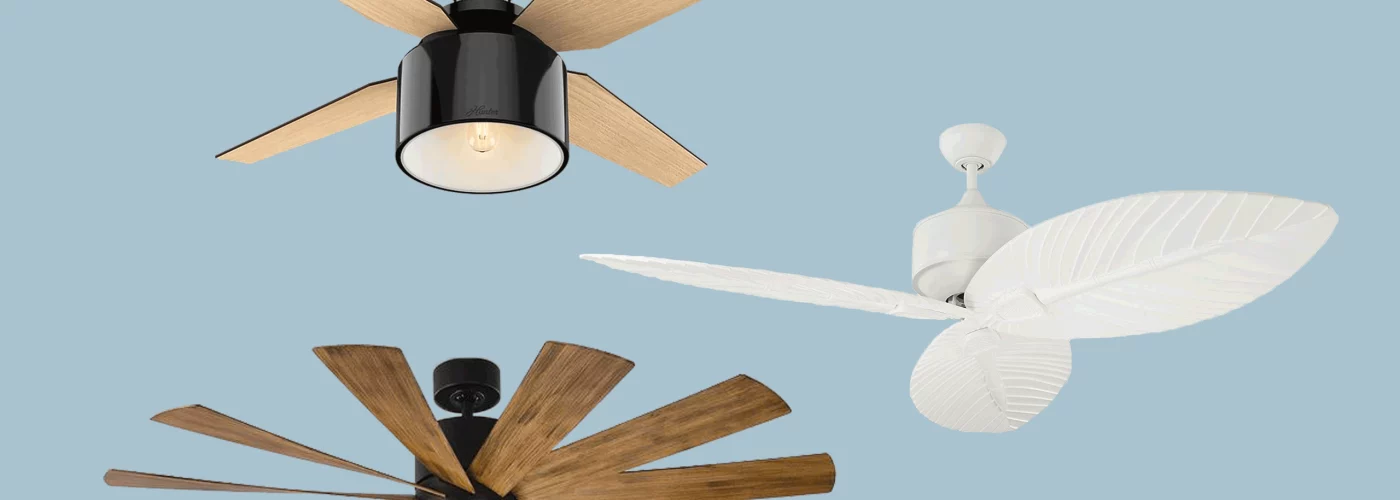Ceiling fans offer style while also being practical. They are a great option if you want to improve airflow, lower energy costs, or increase the aesthetics of your space. This comprehensive guide will cover everything you need to know about ceiling fans including what they are, how they work, and their types as well as installation tips and best maintenance practices.
Benefits of Ceiling Fans
Ceiling fans are pretty popular and that’s because they offer better air circulation. Ceiling fans can also lower energy bills. This makes it possible for you to keep your thermostat higher in the summer and be comfortable or circulate warm air more effectively, which cuts down on how much energy heating or cooling your home needs.
Ceiling fans come in designs and finishes to complement any decor, from modern to traditional. They can also be the focal point of a space or get concealed within the previously established interior decoration. Plus, most ceiling fans have lights built-in, making them great for all of your lighting needs.
Types of Ceiling Fans
Different kinds of ceiling fans are designed to cater to your needs. Standard ceiling fans are the most popular type and work well with eight to nine-foot ceilings. They come in several different styles and sizes to accommodate your space and decor.
Flush mount ceiling fans, also known as hugger fans, are ideal for low-ceilinged rooms. These fans are mounted flush to the ceiling without a download so that they do not interfere with your headroom but can still effectively circulate air.
In rooms with high ceilings, ceiling fans should be used alongside a download designed to ensure blades are hung at the correct level for ideal airflow. This is great for rooms with ceilings over 9 feet, like living rooms and foyers.
Outdoor fans and weather-resistant fixtures work well for home porches, patios, and other living spaces. They are built with durable materials that do not easily yield to moisture and corrosion, guaranteeing consistent performance through different weather types.
Selecting the Perfect Ceiling Fan
Considering the performance and beauty, selecting an appropriate ceiling fan is a little difficult as there are multiple factors you need to keep in mind. One of the most important features in this regard is size. If the fan is undersized, you may not be able to get enough circulation off of it – and if it’s too big, it can clash with your space.
Another major factor is the height of your ceiling. Standard ceiling heights will require a fan with a standard download, but lower ceilings may need either flush mount. This will ensure a fan will do its job well.
The quality of the motor continues to be a significant influence on how well and how long a ceiling fan will perform. Fans with good motors are also cooler to run and there is less wobble. Ultimately, look for fans powered by energy-efficient motors that not only consume less electricity but provide better performance compared to the traditional models.
Installation Tips
A ceiling fan must be properly installed. First, kill the power so you do not get electrocuted. Closely follow the manufacturer’s instructions and double-check that all parts are put on properly as well as shrink-wrapped in place correctly.
Install a fan-rated electrical box that can hold the weight and vibration of the ceiling fan. Regular electrical boxes are not made for ceiling fans and can cause safety issues. If you are installing this light kit on a new fan, be sure it is an application approved for damp locations.
Balancing the fan blades to eliminate wobbles and noise. Balancing kits are included with most ceiling fans to help you perfect the adjustments on your blades. When a ceiling fan is properly balanced, it will work smoothly and last much longer.
Maintenance Practices
Here are instructions on how to maintain your ceiling fan regularly and keep it Energy Star efficient for a long time. Occasionally clean the blades and motor housing to remove dust or debris that may hinder performance. Use a soft cloth or brush to not scratch the finish.
Make sure your screws and connections are checked for security at regular intervals. A loose component can make the fan wobble which produces noise. If you see any of the signs mentioned above, check up on it immediately to avoid worsening the situation.
Use any recommended motor lubrication. Many newer ceiling fans have sealed motors that do not require lubrication, but older models or those with unsealed bearings may need periodic oiling to keep running smoothly.
Ceiling fans not only offer improved airflow but also save you money on energy costs and look good while doing it. Learning the different types of ceiling fans, picking out the best one for your space, and maintaining it will allow you to fully utilize the benefits over an extended period. From updating your indoor living space to creating a relaxing outdoor oasis, ceiling fans are an ideal and economical option that can boost the comfort and aesthetic appeal of your home.





